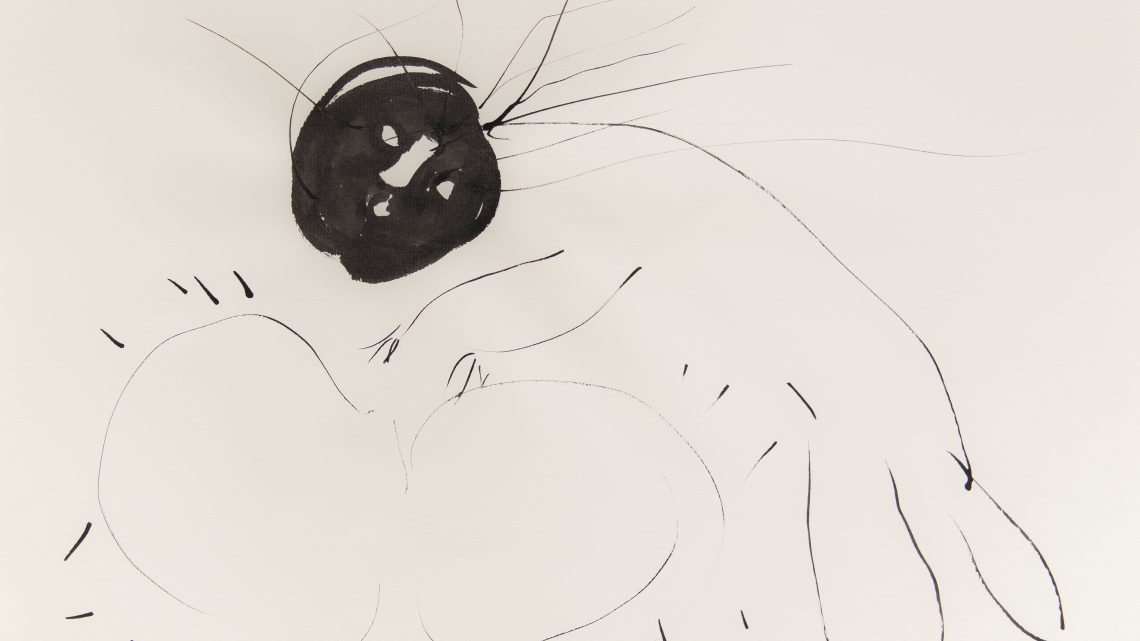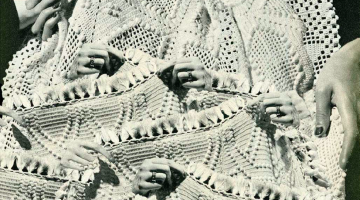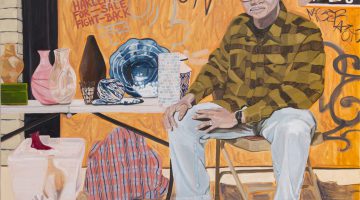Zipora Fried: Late October
On Stellar Rays
1 Rivington Street, New York, NY 10002
October 23 – December 4, 2016
Hung like banners from ceiling-suspended rollers, opulent spills of paper swell over their supports to double almost to the floor. The outward face of each sheet is coated in a single color, punctuating the room with the blues, greens, and blacks of Zipora Fried’s series “All I Thought and Forgot” (2009-2016). As the viewer moves through the space, between floating columns of color, the papers glisten with the waxy luminosity of pencil-impressed marks. Seemingly infinite lines make up these thirty-foot expanses. The discrete marks refuse to drown in the effort to fill in and fill out, instead washing into separate, colorful seas of graphite, helioblue-reddish, deep cobalt green, and delft blue. These lines like woodgrains march in subtle columns vertically up the lengths of the drawings, winding their ways through the crevices and curls.
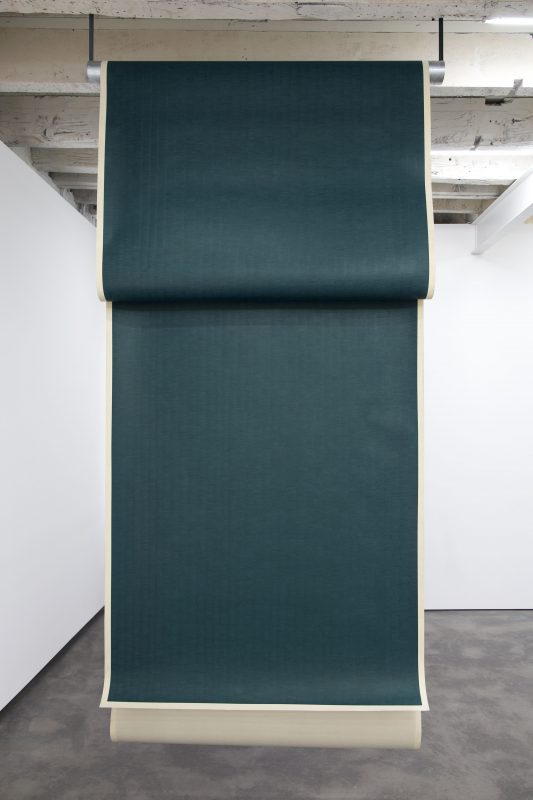
Zipora Fried, “All I Thought and Forgot” #3 (deep cobalt green), 2016. Colored Pencil on Paper, 312 by 53.5 inches (792.5 by 135.9 cm). Courtesy of the artist and On Stellar Rays. Photo credit Kirsten Kilponen.
In the far room, two works from Fried’s series “Black and Nougat” (2016) are hung behind glass. Like the larger works of the previous room, these two are composed of vertical scores made in a horizontal grid, this time uniting the titular colors in the same drawn space. In each row, the colors bleed together in the subtle gradations of dried grass, hazel tones eroding dark edges to reveal the individual strains that constitute each. Each spectrum progresses across at a different pace, the seeping colors becoming as fingers sweeping across of the page.
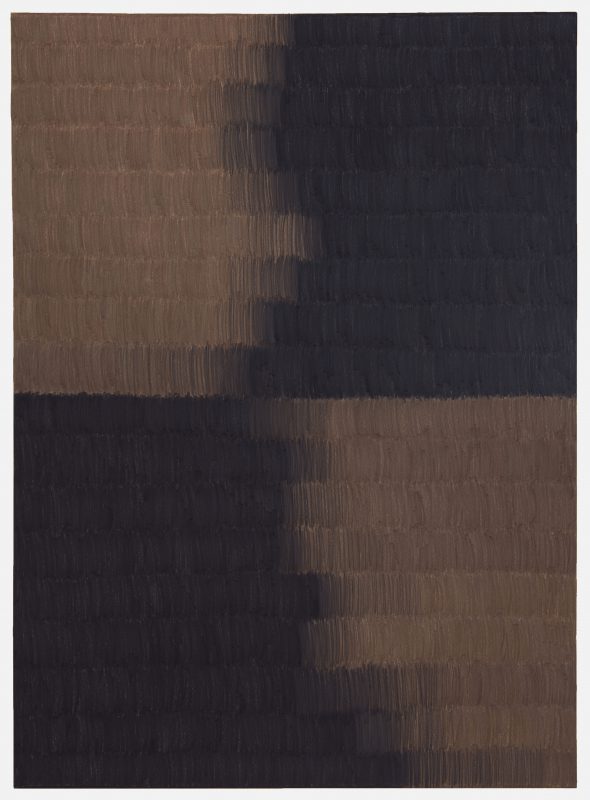
Zipora Fried, Black and Nougat #6, 2016. Colored pencil on paper, 30 by 22 inches (76.2 by 55.9 cm). Courtesy of the artist and On Stellar Rays. Photo credit Kirsten Kilponen.
Across from these framed drawings, a horizontal ledge is spread with a grid of bare sketches, alive with gesture and waved paper planes. Oriented to offer themselves from the flatbed space of “operational processes,” these drawings invite the viewer into the frenzy of their creation.[1] The sketches are populated by grinning, gaping characters with faces that seem to iterate out like Russian dolls in unsettling inkblot-symmetries; moth wings turn into a Janus-faced head, while a cyclops peers up at us, straining his single-eyed stare. Figurative where the other drawings are abstract, hasty in the face of meticulous labor, the “Barbara” sketches (2016) return us to the psyche that haunts all of these works, disclosing the strange narratives hiding behind the webs of penciled lines.
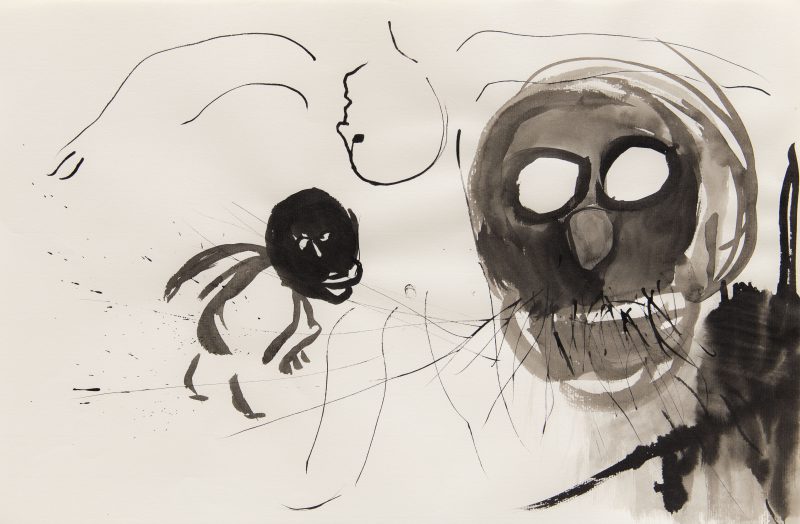
Zipora Fried, Untitled, 2016. Ink on paper. 12-1/2 by 19 inches (31.8 by 48.3 cm). Courtesy of the artist and On Stellar Rays. Photo credit Kirsten Kilponen.
With the knowledge of these ghosts, the previous series are animated by a new spirit. The activity of the marks now suggests a mania that belies what had seemed a silence and stillness. The tracing and retracing of the same simple shape becomes both a craze and a communion, a return to self and spirit through a meditative and endless compulsion. The confrontation between the three colorful sheets of “All I Thought and Forgot” completed this year and the graphite scroll from 2009 expresses the nagging conviction of an idea that won’t go away, but also the different weights that such activities may have at different times in a life. In spite of the outward semblance of the works in the series, the hours held by All I Thought and Forgot #1 (2009) speak of a different Fried than those put into the later works. The lines themselves cannot divulge the labor of their making, existing merely as tally marks for memories, containers for passing time. “All I thought and forgot” becomes an admission and forgiveness of the fallibility of memory, a series of pages lined with stories as inscrutable to viewers as they are to the artist herself. In Ardor, Roberto Calasso reminds us that “behind death [is] the actual fact of disappearing.”[2] Hung so that we cannot see the entirety of the scroll, each work signals its importance foremost as artifact of a gesture, signs of life traced into the ephemeral forms of leaves. Fried’s drawings accept decay, drawing the veil across an interior self, disappearing in acts of immortality.
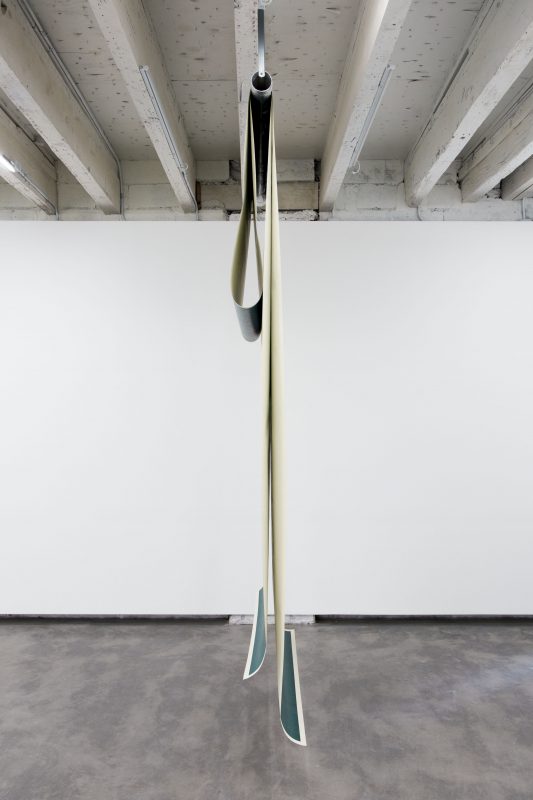
Zipora Fried, “All I Thought and Forgot” #3 (deep cobalt green), 2016. Colored Pencil on Paper, 312 by 53.5 inches (792.5 by 135.9 cm). Courtesy of the artist and On Stellar Rays. Photo credit Kirsten Kilponen.
—
[1] Leo Steinberg, “Reflections on the State of Criticism” (1972), in Robert Rauschenberg, ed. Branden W. Joseph (Cambridge: MIT Press, 2002), 28.
[2] Roberto Calasso, Ardor, translated by Richard Dixon (Penguin Books, 2015), 34.
